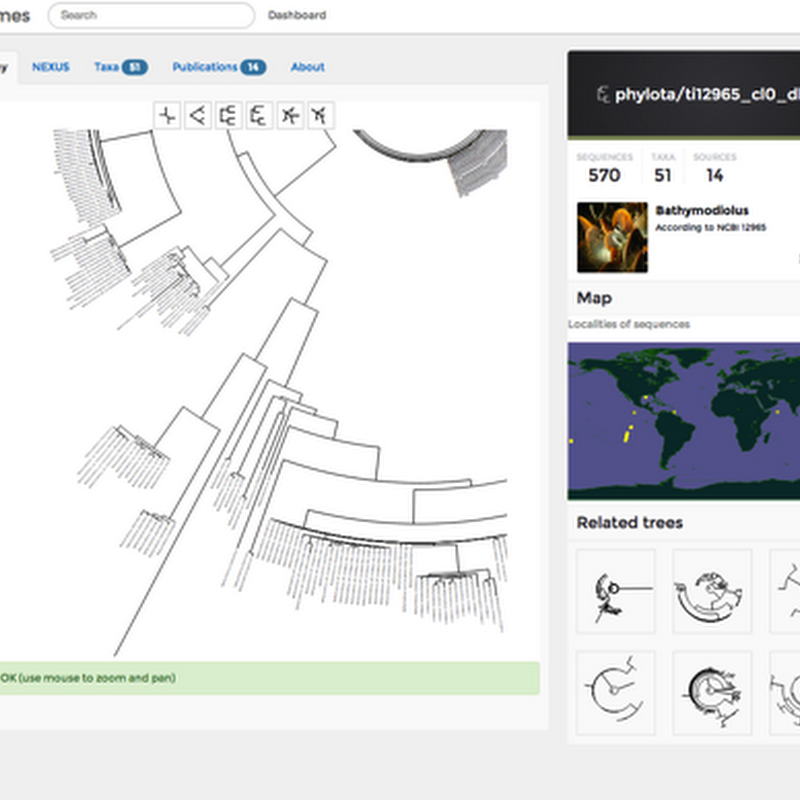One of goals of BioNames is to be more than simply another taxonomic database. In particular, I'm interested in the idea of having a platform for viewing taxonomic publications. One way to think about this is to consider the experience of viewing Wikipedia. For any given page in Wikipedia there will be links to other, related content in Wikipedia.
iPhylo

My latest tweak to BioNames is to add colour to the phylogenies. Terminal nodes with the same name are labelled with the same background colour. For example, here is a tree for fiddler and ghost crabs: The colours make it easier to see that this tree has a mixture of a few sequences from divergent taxa, and a lot of sequences from the same taxa. Note that you can now also download the SVG drawing of the tree.

In 2011 I wrote a short post about DeepDyve, a service where you could rent access to an article. DeepDyve has launched a "5-Minute Freemium" service where you can view an article online for 5 minutes, for free. You have to log in, either with DeepDyve or using Facebook, but no actual money changes hands. If you want to read for longer, or download an article then you have to get out your credit card.

One reason I built BioNames (and the related digital archive BioStor) was to create tools to help make sense of taxonomic names. In exploring databases such as GBIF and the NCBI taxonomy every so often you come across cases where things have gone horribly wrong, and to make sense of them you have to drill down into the taxonomic literature.
I've created a short screencast showing some of the phylogenies in BioNames. If you want to see these for yourself here are the links: Ocypodinae (ghost and fiddler crabs) Osedax (bone worms) Agaonidae (fig wasps) BioNames and phylogenies from Roderic Page on Vimeo.

One of the things that didn't make last week's deadline for launching BioNames was the inclusion of phylogenies.

One consequence of having a database of literature with external identifiers such as DOIs is that we can plug into a bunch of external services to get additional information about a reference. For example, altmetric can take a DOI and display some article level metrics. As an experiment I've added code for altmetric badges to the web page in BioNames that displays publications.

BioNames (http://bionames.org) is live. Getting to this point was supported by funding from EOL as part of their Computable Data Challenge. The award from EOL is paying for Ryan Schenk to work on the interface and overall design of the web site, and over the last few weeks we've been working increasingly frantically to get things ready. "Ready" is a relative concept.
This week promises to be *cough* interesting. The deadline for the BioNames project is the end of the week (May 31st), and all I have right now is a blank web page (gulp). Behind the scenes data is being cleaned, mushed, and reconciled, and CSS, Javascript, and HTML are being wrangled. It's going to be tight, but hey, what could possibly go wrong...?
Things are finally coming together, at least enough to have a functioning demo. It looks awful, but shows the main things I want BioNames to do. One thing I'm most concerned about at this stage is the possible confusion users might experience between taxon names and concepts.